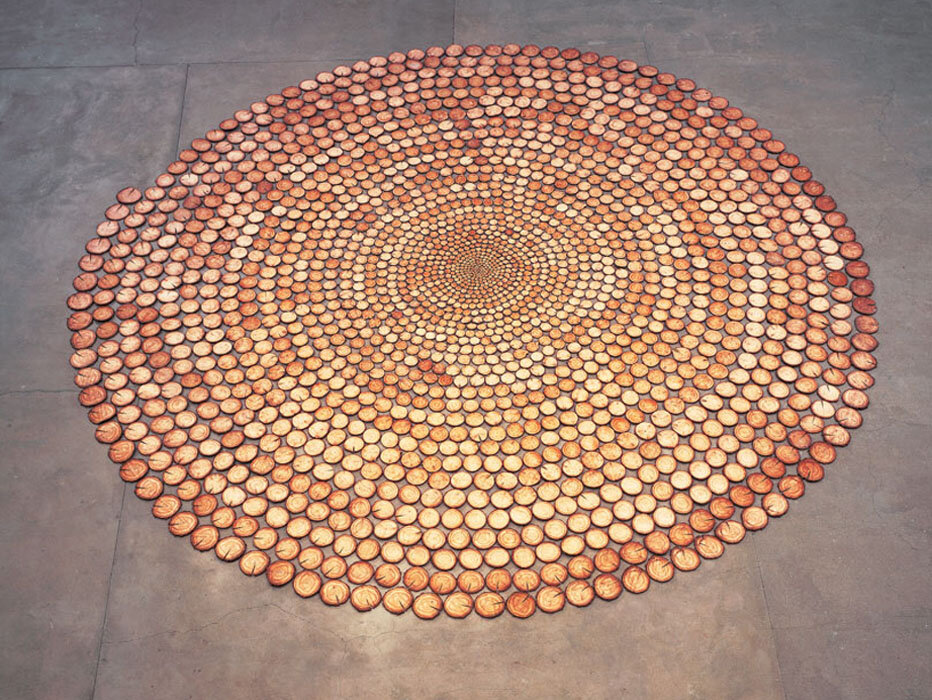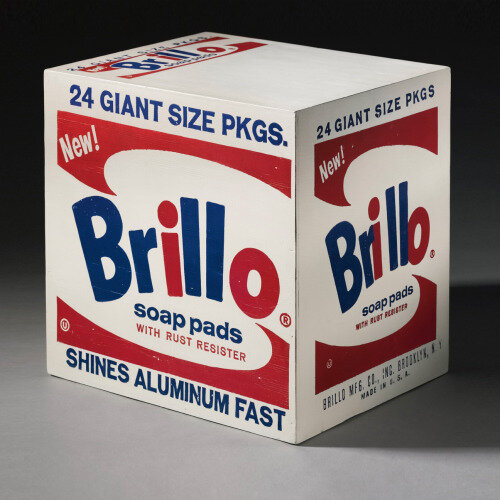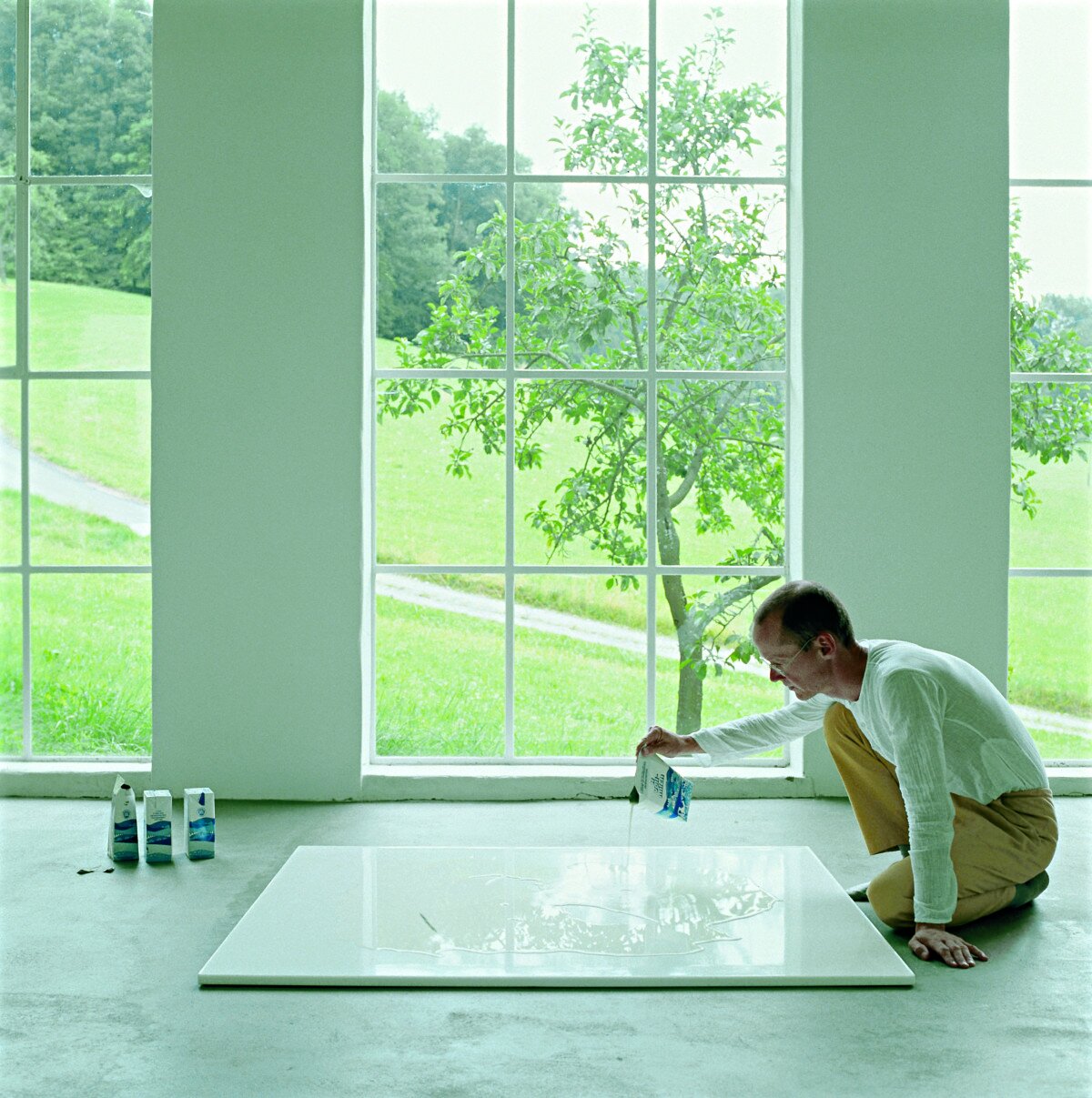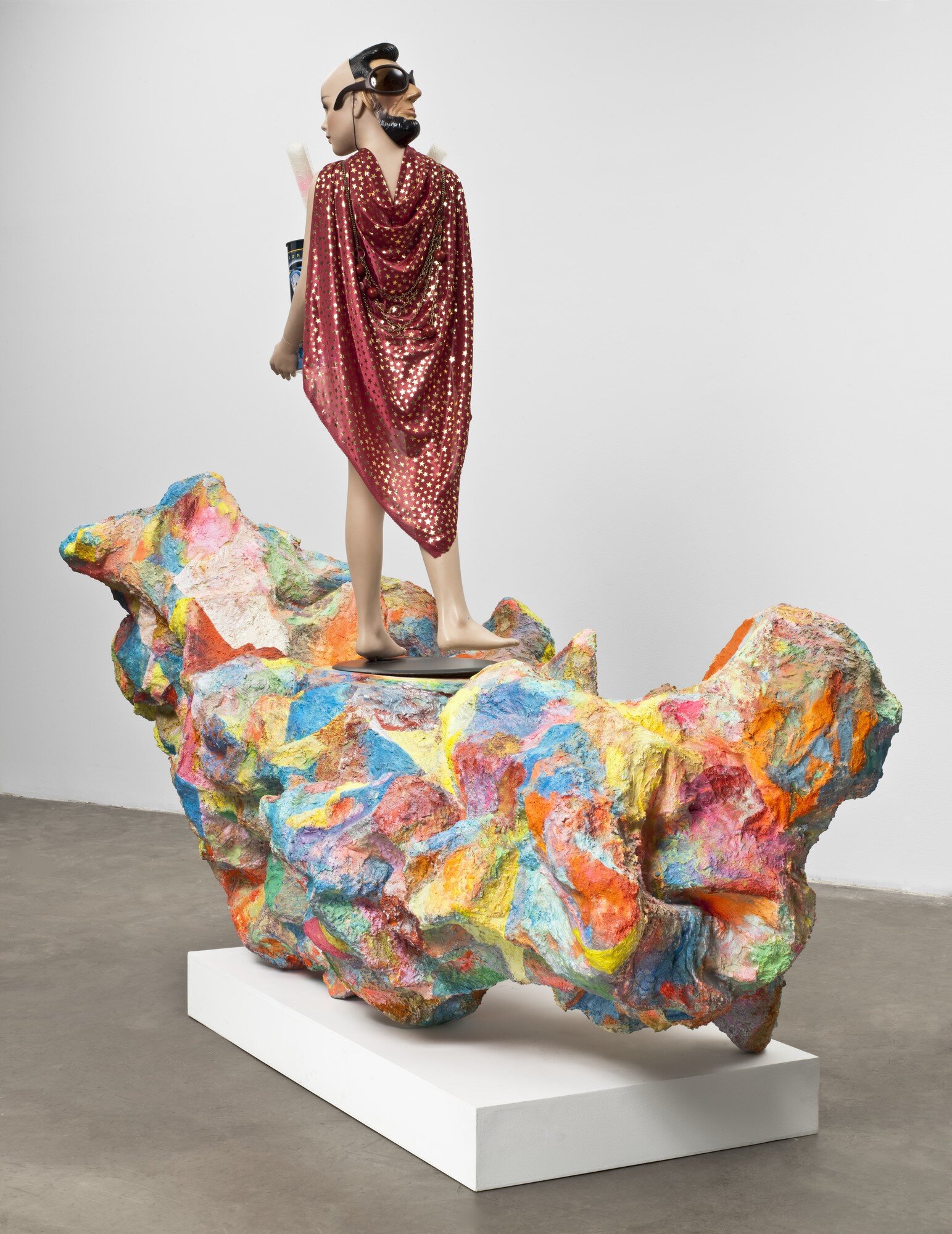
ARTS 260/360
Intermediate/Advanced Sculpture
Spring 2021 - Hybrid
T/Th 7:30pm-9:30pm
FCVA room 124
Welcome to the home page and syllabus for ARTS 260/360 Intermediate/Advanced Sculpture. Here you will find all the resources you’ll need to immerse yourself in thinking and making this semester.
This course builds upon previous foundational experience with sculptural materials and design, placing greater emphasis on the ideas that shape the way objects and spaces are made, interpreted and valued. Exploration into the non-traditional formats of installation, performance, video, collaboration and social practice further situates student work within the landscape of contemporary sculptural practice.
I continue to emphasize contemporary ways of working along with cultivating your historical awareness and sensitivities to form and content. I strongly encourage you to explore new materials and processes while gaining confidence in more familiar media.
This semester’s iteration of Intermediate/Advanced Sculpture will be more materially driven than is typically the case in order to accommodate social distancing protocols. Together we will activate the entire sculpture studio to its fullest at all times. There will even be dedicated work tables and shelters outside of the classroom to extend the working space and time. I give my thanks in advance, for your patience and flexibility as we figure out this unprecedented way of working together. I trust you will honor the need to operate in this way for the safety and benefit of everyone involved!
It should go without saying that work at the intermediate and advanced levels requires greater independence, self-orientation, and focus. This seems true now within the pandemic more than ever—we are all being called to grow new sources of resilience and self-reliance in practically everything we do. Let’s do this!
Office Hours: by appointment; please email me to schedule acuffm@whitman.edu
Zoom: https://whitman.zoom.us/j/2208648525
Cell: (319) 594-2173
Much has happened technologically and culturally in the course of the late 20th and early 21st centuries to alter the traditional parameters of art making. Together we will examine crucial pivots and revisions, endeavoring to understand “extra-artistic” and internal forces that shape the landscape in which contemporary sculptural gestures are made.
Artists are engaged in some of the most exciting research around--research into what it means to be alive and human right here and right now. Art, if you let it, will blow your hair back, get your heart revving, and even make your skin tingle. My teaching celebrates this through experimentation and exploration; it’s not art if there isn’t risk-taking, trial, error, revision, frustration, failure and epiphany. My classroom is dynamic space, virtual or otherwise. That said, it is a collective space, where we all benefit, support, encourage and challenge each others’ endeavors. A spirit of cooperation befits this and I exhort you to contribute to it. The quality of your presence and attention to course content is indispensable. With the addition of virtual space to our classroom, these forces of attention and commitment are critical in entirely new ways and foundational to every thing that we do.
I have conceived an overall architecture for the course, but I am also excited to tailor our investigations to our interests and needs as they evolve and present themselves. I expect you to make a serious and sustained effort to wrestle with the ideas proffered, to take notes during lectures, to come prepared to actively discuss readings or assigned videos, and to spend time at least twice during the week to further your projects between classes. It will be important to develop habits of mind that keeps you moving forward and connected to the course goals at regular intervals, rather than making binge-y, spastic, all-or-nothing gestures constrained heavily by time, i.e. “cramming” an art work into being. Within the context of pandemic related social distancing protocols, your access to the studio may inevitably feel somewhat circumscribed. Let’s try to be as flexible in our making and thinking about how to be in this space and with each other in as safe a way as possible.
Please feel free to be in contact with me as much as you need: in class, during office hours, via email. You may even text me or call my cell phone if you’re really struggling with something. Like most folks, I can get overwhelmed by email and therefore need to practice good boundaries with it, so please give me 24 hours to respond in that way. Also, I’ll expect you to check your email once every 24 hours or so, because I’ll occasionally want to communicate via this medium (about assignments, materials, etc.) and need to rely upon the certainty of your being on the other end of these electronic missives. Thank you, in advance!
Last but not least, this syllabus functions contractually, and as such delineates course objectives, expectations and obligations. You are responsible for the information herein, so please take time to read through this document carefully.
SOME THOUGHTS ON LEARNING, VIRTUAL OR OTHERWISE: This course, like all of my courses, is driven by relationship-centered pedagogy. That means we will privilege the relationships we have with each other, strive to make connections between course content, materials and larger intellectual themes, and consider the virtual space as just one of many materials we can intentionally sculpt during our time together. We are doing thing under very unusual and often stressful circumstances. I sincerely commit to honoring the strangeness of this time with all of its possibilities, limitations and unknowns.
GOALS AND OBJECTIVES:
- Develop 3-D visual thinking and making skills. The hand knows things that the mind does not!
- Understand the techniques and processes related to individual media. Get into a complicated relationship with matter!
- Hone your ability to assess and interpret 3-D forms, conceptually and formally. Cultivate intuitive, irrational, emotional, embodied intelligence!
- Develop an aesthetic vocabulary informed by the Visual Elements and Principles of Design. Yup.
- Become acquainted with the critical discourses that articulate the historical and contemporary concerns of sculpture. Indeed.
- Take creative risks, experiment, fail, succeed, and repeat. Exactly!
- Think divergently. Make radically. Yes, please!
EVALUATION: In this course I value process equal to product. I will look at (and thus grade) the process and the product in all the work you produce throughout the semester; this includes actual projects and material studies made in the brainstorming stages. A lot of this will be less visible to me through the online format, still, let’s struggle together to make this manifest.
Process (everything that leads up to a work) = 50% of grade
Process is paramount in artmaking. Dedicated development of your ideas, exploration of a variety of options, and patient consideration will yield the most extraordinary results. By “process,” I mean the development of your ideas in sketches, maquettes and in concept. As a general rule, persistence and deep attention offer ample pay-off. At other times, you will need to submit to the irrational forces of intuition and madness, heeding the unique screech of sirens and muses.
Product (design, craft, imagination manifest in the final piece) = 50% of grade
The formal choices that you make about size, scale, shape, color, material, etc. ARE the content of your work. Close attention to the Visual Elements and Principles of Design will yield the greatest synthesis between FORM and CONTENT. By “product” I mean the final work, its formal success and achieved meanings as delineated by the assignments, and in conversation with the fundamental concerns of sculpture, historical and contemporary.
The relationship you build with sculptural materials generates the knowledge and skill that allow you to transform raw matter into sculpture. Craft is both the physical and intellectual skill you bring to the work.
Many aspects of art cannot be taught. That said, we will work to tap into places of intuition, creativity and mystery that fuel great human achievements, which sometimes take the form of art. Mostly, making art is simply a way of thinking—a way to construct knowledge from experience.
I’m as interested in thinking as I am in making and particularly in the intersections between the two. (Ultimately, they are not distinct!) In light of this, I will grade you on your ability to articulate ideas in both materials and words. In addition to presenting a variety of physical/creative problems to solve, course content will include discussion of influential technological, social and cultural forces that have impacted artists and art making over the last 100 years. Your work AND the discussion of said work should evidence engagement with these ideas.
All assigned activities must be completed in order to pass this course. Activities completed with high degrees of attention, persistence, passion, and creativity will warrant high marks.
GRADES: I keep a running log of your performance in this class re: participation, attendance, process and product. I will also give you in-person feedback at mid-semester at which time we will schedule a one-on-one meeting to discuss your progress in the course and to answer any questions you might have.
Project #1 - 20 pts.
Project #2 - 20 pts.
Project #3 - 20 pts.
Project #4 (the floating project) - 20 pts.
Citizenship - 20 pts.
OFFICE HOURS: I’m available to you during our class time and at other times through the week when you may need assistance with course content/assignments; just email me if you’d like to meet outside of our regular time slot. We can chat about the course, college more generally, life, careers, current events or whatever. Do not feel like you need a so-called “good” question – you can even just say “hello”!
CITIZENSHIP: I use the term Citizenship normally to indicate your performance in the studios with regard to participation, work ethic, cleanup, organization, and safety, in addition to a measure of the quality of your engagement with the meat and bones of this course’s intellectual content. In an online setting your attentiveness to the larger learning environment/culture and collective intelligence that we generate (or thwart) together takes on a totally new dimension. Sculpture still requires a particular kind of mindfulness, presence, and an ability to execute from places of intuition/embodied intelligence. We will cultivate these throughout our time together.
THOUGHTS ON POWER, REPRESENTATION AND HISTORY: I believe art and artists are indispensable to a well-functioning democracy. Democracy requires imagination and flourishes when the imaginative life of a society is cultivated and nurtured. We can only create that which we can imagine, whether our creations are works of art, engineering, public policy, etc. I therefore strive to maintain a classroom that is deeply respectful of differences in ideas, opinions, strategies, and experience. Yet the history of art is affected by the same historical operations of power that play out in the world at large. Cognizance of the ways race, class, gender, sex, ethnicity, religion, age, ability, national origin, and sexual orientation inform our making and interpreting is crucial to our intellectual inquiry. I seek to know and carefully navigate the ways artistic representation makes power and privilege visible. This can be tricky, but again, I endeavor to build a community in which we ask hard questions about how the history of images and objects shapes our experiences, desires and sense of the possible. Building this awareness will assist the effort to decolonize the curriculum.
I would be remiss to fail to acknowledge that the forces of empire in their different guises (genocide, slavery, white supremacy and misogyny) have conspired to allow us to inhabit this room on this campus on this land. I do so with the hope that consciousness of these agents can lead us away from their perpetuation.
CRITIQUES: Critique is a format for discussing work in a more or less public way. Critiques can take many forms, including group-wide scenarios, peer/partner critiques and written reviews. Often they utilize free-association, but they function best when the criteria for analyses are clear. You will be on both ends of the critique, giving and receiving feedback. At the most basic level our interest will be in learning how visual language functions, and how to wield it for certain effect. All artworks make arguments and utilize visual rhetoric to do so. But art also traffics in language that is purposefully ambiguous, historically situated and slippery. Meaning functions in ways that are often not rational or literal but instead oblique, associative and evocative. Interpretation happens best at the deep end of the pool and we will spend a good amount of time there.
LATE WORK: Projects unfinished by the designated time are extremely discouraged and will--excepting rare cases of serious personal crisis, famine, war, acts of God and/or economic collapse--suffer commensurate reduction in grade. I advise you to communicate with me asap if you anticipate not being able to complete an assignment on time.
ATTENDANCE/TARDINESS: Prompt and consistent attendance is crucial and your success in this class will depend largely upon it. I take attendance daily and the quality and quantity of your attendance will be reflected in your Classroom Citizenship grade. I always require an email from the Dean of Students in order for an absence to be considered Excused. Often, at the beginning of class I make important announcements and set up the schedule of activities, answer questions, or reflect on our direction and progress. Routinely missing the first 5-10 minutes is unacceptable and will severely impact your Citizenship grade.
WORKLOAD: A modicum of success in this class will typically require 5-6 hours of work outside of class time per week; this includes working on class projects, readings/videos, etc.
Art making is not a linear process, and artworks cannot be crammed overnight; this dictum applies especially to material based works, which are supremely subject to laws of physics, skill and the functions of time and space.
CLASS STRUCTURE: Our time together will be structured by studio time, short video lectures, group and individual Zoom interactions, critiques, and thinking through/together: writing and discussing art, artists and ideas.
INSTAGRAM: sculpture260360
COURSE FEE: $150
SAFETY: Works involving bio-hazardous materials, body fluids, egregious physical or emotional pain, or weapons will NOT be permitted in class. If you have ANY concerns regarding the safety of a material or process or project, you are required to consult beforehand with me. Let your guiding principle be to “do no harm,” physically to the building, yourself, grounds, facilities, etc. or emotionally to yourself/others. While some actions may be intellectually defensible within the history of art, there are limits to what I will allow to happen in my classroom, virtual or otherwise, for both your and my emotional and physical safety.
CHANGE: I reserve the right to alter or modify this syllabus as we proceed through the weeks of the semester.
ACCOMMODATIONS: If you are a student with a disability who will need accommodations in this course, please meet with Julia Dunn, Associate Dean of Students (Mem. 205, X5213, dunnjl@whitman.edu) for assistance in developing a plan to address your academic needs. All information about disabilities is considered private; if I receive notification from Ms. Dunn that you are eligible to receive an accommodation, I will provide it in as discrete a manner as possible.

Wolfgang Laib

Antony Gormley

Antony Gormley

Antony Gormley

Marcel Duchamp

Ai Weiwei

Meret Oppenheim

Andy Warhol

Wolfgang Laib

Anish Kapoor

Antony Gormley

Rachel Harrison

Liz Magor

Liz Larner

Wolfgang Laib
Project #1 Objecthood
We are surrounded by objects; they litter our environment, populate the world in massive, massive quantities. What makes some objects more powerful than others, especially those that possess no utilitarian value? What kinds of power can they be given and toward what end?
Locate and photograph 10 objects that you can find within your domestic environment. These objects should be smaller than 12” in any one direction. Think carefully about how you are framing these objects, lighting them and about the background detail you choose to include/ exclude. Post these to our instagram site. Spend some time thinking and writing about these objects individually and as a group according to these prompts and sculptural considerations.
Begin by departing from the objects you have amassed: create an object in plaster that is an interpretation of one of the objects you have gathered. You can play with altering things like scale, shape, mood, texture, etc. as you experiment with the visual character of your objects/creations. Feel free to embellish your plaster object with paint or any other surface treatments, found materials, etc.
As you continue to experiment start noticing how the material behaves, and follow the detours that the making presents. It may do something really well or it may do something very poorly; follow those parts of its personality where it leads, into the unknown.
Next, step away from representation altogether: explore plaster’s properties as a raw material. Test the limits of its personality as it moves from powder to liquid to solid. What interests you about each state? Employ as many techniques as you desire, noting when you are really interested in a process vs. when things seem tedious or obdurate.
Plaster is one of the most versatile materials; it can be made to appear like other materials quite easily; it participates in almost all of the traditional approaches to sculpture (additive, subtractive and moldmaking); and it can be made to look incredibly realistic.
Through engaging with the material itself and researching the objects pictured above, discover what ideas within sculpture really interest you.
At the end of your explorations, present the three best objects by photographing them for Instagram and writing a short statement that articulates your process.

Liz Larner

Leonard Drew

Liz Larner

Martin Puryear

Martin Puryear

Martin Puryear

Martin Puryear

Richard Deacon

Martin Puryear
Project #2 Linear Thinking
Narrow your focus so that you are able to see lines around you: cracks in the cement, powerlines, rivers winding through landscapes, tree branches, shadows, etc. Photograph these lines, cropping them closely so that they become abstracted. Post 10 images to Instagram documenting these found lines in the world.
Smash together 3 of these photographs (in photoshop, or just drawing them together) to create an abstract composite in which no line describes anything in strictly representational terms. Edit and alter the form, adding and subtracting lines as you see fit, trusting your intuition.
Start to build the form in steel and watch closely what happens when you move from 2-D space to 3-D space. Maintain the abstractness of the work. Keep welding and grinding until you are satisfied with your object and believe that it is viable from many angles. Think about involving color, and what this element would effect. Keep adding and subtracting until your work has the shape of a complex, abstract thought.
Project # 3 Process
You will be given one 2”x4”x8’ piece of pine. There are infinite things you could do with this building material toward either formal or conceptual ends.
Start with listing and word mapping any associations you have with this piece of lumber. Make lists of things you could do to the plank, and what they would suggest. Post some images of these maps to Instagram.
Make a list of tools you might use to manipulate the wood. Execute 3 studies using 1’ lengths of a 2”x4”, in which you repeat one gesture over and over. The gesture can be additive or subtractive. Post these to Instagram. After having conversations with your peers and me, realize the final piece using the 8’ length of 2”x4”.
Project #4 (The Floating Project)
This project will involve thin pieces of pine that you can dowel together into whatever you imagine. You can work with these materials outside the sculpture studio and during special times within the critique gallery. It is a project that floats in the space between the other projects, like a ghost.
Week 1
Tuesday, January 26, 2021
WATCH: course intro video
DO: Look over the syllabus to get a sense of the projects, materials and artists we will be working with. Watch the Art 21 videos associated with the artists Leonardo Drew, Anish Kapoor and Liz Larner (use links on their pictures above). Make notes of the ideas that really have traction for you—ideas about creativity, the role of art, what an object can say, etc., really track what grabs you about their work and thought. Make a short video in which you introduce yourself and speak for a moment about one of these ideas—from the videos—-that you feel will guide your making during the semester. Post that video to our Instagram account by Monday, February 1 @ 10pm (sculpture260360, password: piggyphant)
Thursday, January 28, 2021
Keep working on your intro video.
Week 2
Tuesday, February 2, 2021
In person meet up! 7pm
Thursday, February 4, 2021
In person meet up! 7pm
Week 3
Tuesday, February 9, 2021
WORK DAY!!!
Thursday, February 11, 2021
WORK DAY!!!
Week 4
Tuesday, February 16, 2021
WORK DAY!!!
Thursday, February 18, 2021
POWER & PRIVILEGE SYMPOSIUM
WORK DAY!!! (studio will probably be open)
Week 5
Tuesday, February 23, 2021
WORK DAY
Thursday, February 25, 2021
WORK DAY — FIRST PROJECT DUE on Friday at 5pm (posted to Instagram)
Week 6
Tuesday, March 2, 2021
ROTATE WORK AREAS, begin second projects Demos and work day.
Thursday, March 4, 2021
ROTATE WORK AREAS, begin second projects Demos and work day.
Week 7
Tuesday, March 9, 2021
WORK DAY
Thursday, March 11, 2021
WORK DAY
Week 8
Tuesday, March 16, 2021
WORK DAY
Thursday, March 18, 2021
WORK DAY
Week 9
Tuesday, March 23, 2021
SPRING BREAK DAY
Thursday, March 25, 2021
WORK DAY
Week 10
Tuesday, March 30, 2021
WORK DAY
Thursday, April 1, 2021
WORK DAY
Week 11
Tuesday, April 6, 2021
WORK DAY
Thursday, April 8, 2021
WORK DAY
Week 12
Tuesday, April 13, 2021
SECOND PROJECTS DUE - small group critiques and documentation, larger zoom critique at 8pm
Zoom: https://whitman.zoom.us/j/2208648525
Thursday, April 15, 2021
SECOND PROJECTS DUE - small group critiques and documentation, larger zoom critique at 8pm
Zoom: https://whitman.zoom.us/j/2208648525
Week 13
Tuesday, April 20, 2021
WORK DAY
Thursday, April 22, 2021
SPRING BREAK DAY
Week 14
Tuesday, April 27, 2021
WORK DAY
Thursday, April 29, 2021
WORK DAY
Week 15
Tuesday, May 4, 2021
THIRD PROJECTS DUE - small group critiques and documentation, larger zoom critique at 8pm
Zoom: https://whitman.zoom.us/j/2208648525
Thursday, May 6, 2021
THIRD PROJECTS DUE - small group critiques and documentation, larger zoom critique at 8pm
Zoom: https://whitman.zoom.us/j/2208648525
LAST DAY OF CLASS




